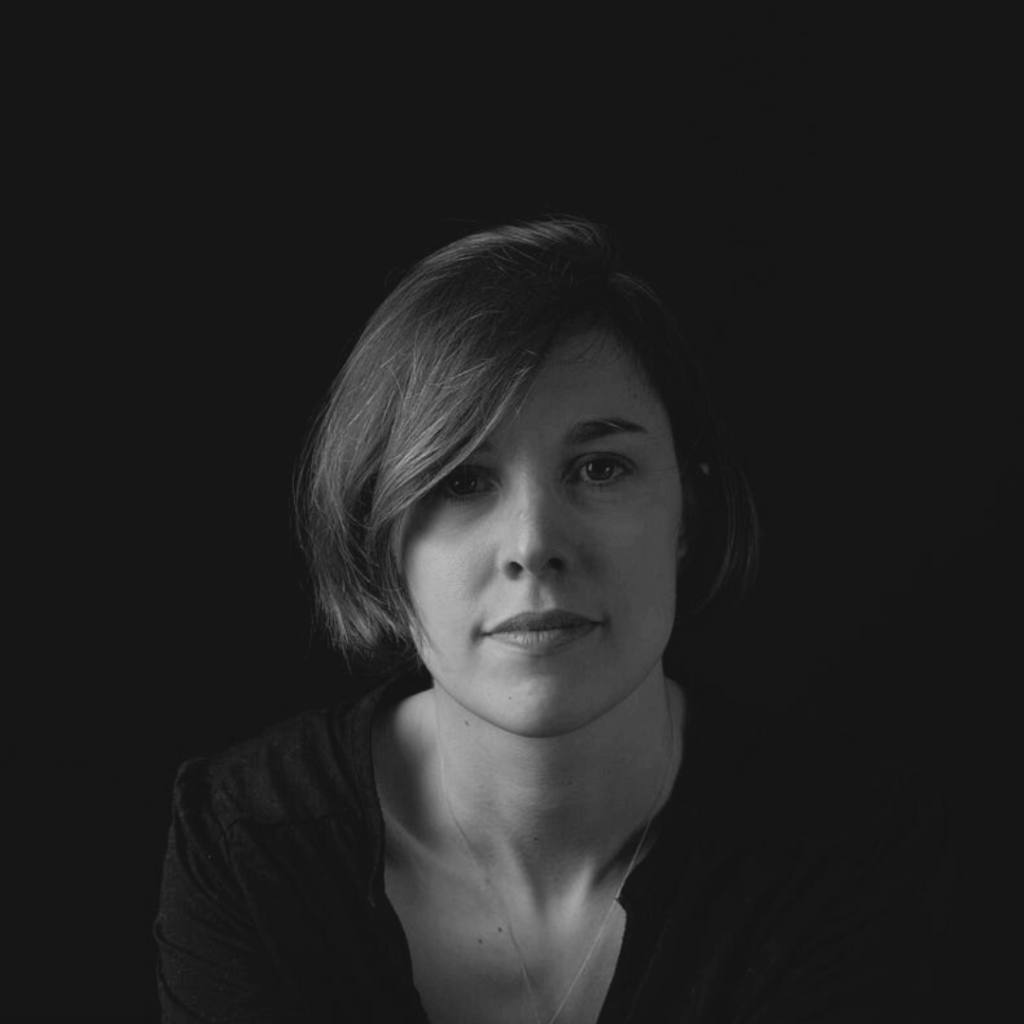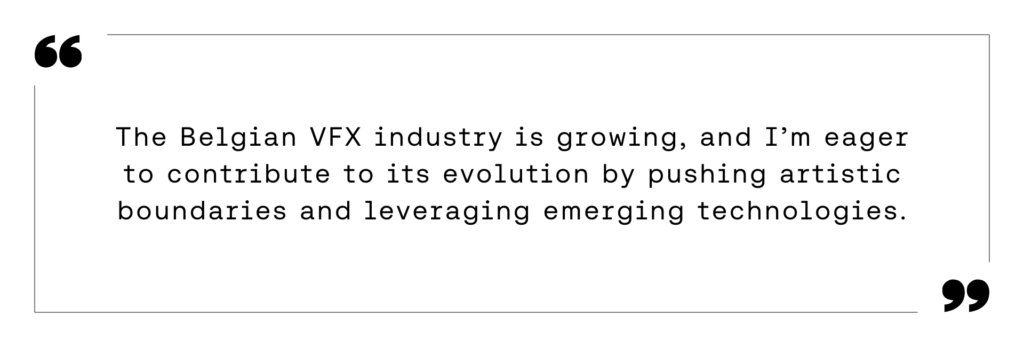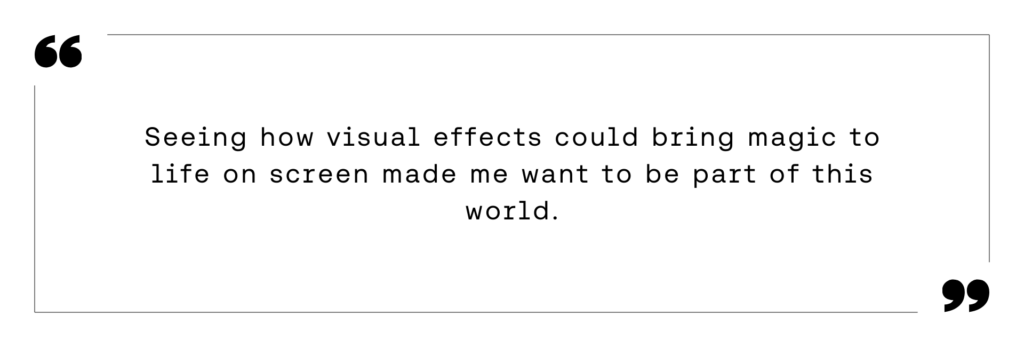Episode 9: Laureline Silan
Welcome to Behind the Pixels, an exclusive interview series that takes you on a captivating journey into the world of visual effects through the perspectives of our talented individuals.
This week, we are thrilled to set the light on UFX Studios’ latest recrue: Laureline Silan!
With over 15 years of experience in the visual effects industry, Laureline Silan has established herself as a highly skilled and creative VFX artist. Over the course of her career, she has worked at several renowned studios such as Mikros Image (now MPC), Nozon, Cinesite, and Framestore. Her expertise has been instrumental in bringing to life a wide range of acclaimed projects, such as The Predator, What happened to Monday, Army of the Dead, Fantastic Beasts: The Secrets of Dumbledore, but also Foundation Season 2 and Fallout.
Known for her ability to merge artistic vision with technical precision, Laureline continues to push the boundaries of visual storytelling through her dedication and innovative approach to VFX and we could not be happier to welcome her at UFX Studio as Head of VFX.
In this episode, Laureline tells us more about how her passion for art and technology -and Harry Potter- led her to pursue a career in the VFX industry, while opening up about how striving for innovation and collaboration contributes to make this sector fascinating.

You recently joined UFX Studios as Head of VFX. What excites you the most about this new role, and what challenges do you anticipate?
Joining UFX Studios as Head of VFX is an incredible opportunity for me. What excites me the most is the chance to shape the creative and technical direction of our projects while collaborating with a talented team. The Belgian VFX industry is growing, and I’m eager to contribute to its evolution by pushing artistic boundaries and leveraging emerging technologies.
Of course, every role comes with challenges. One of the key ones will be balancing artistic ambition with production constraints—ensuring that we deliver high-quality visuals while optimizing workflows and resources.

What unique opportunities do you see for growth and innovation at UFX Studios, and how do you envision contributing to the evolution of the Belgian VFX industry?
UFX Studios is in a great position to expand its influence, not just in Belgium but to the rest of Europe. One of the biggest opportunities I see is leveraging real-time rendering and AI-driven tools to streamline production while maintaining creative excellence. The industry is shifting toward more efficient, flexible workflows, and embracing these innovations will set us apart.
The VFX sector is rapidly transforming with emerging technologies and approaches. In your opinion, what are the key trends shaping the future of the industry, both creatively and technologically? How could we improve the industry in regard to the challenges it is currently facing?
Several major trends are shaping the VFX industry. Real-time rendering, particularly with game engines like Unreal Engine, is revolutionizing production by reducing rendering times and increasing creative flexibility. AI and machine learning are also playing a bigger role, from automated rotoscoping to de-aging technology, making certain tasks more efficient.
On the creative side, we’re seeing a stronger focus on hyper-realism, but also a resurgence of stylized aesthetics, where VFX artists can push the boundaries of visual storytelling. Virtual production is also changing the way we think about set design and cinematography.
Looking back at your career, was there a specific project, mentor, or event that sparked your passion for VFX and inspired you to pursue this path? Could you guide us through your VFX journey?
My passion for VFX started with a deep fascination for the intersection of art and technology, sparked by the Harry Potter films. Seeing how visual effects could bring magic to life on screen made me want to be part of this world. I was especially drawn to compositing because it allows me to shape the final image—where all the elements come together to create something visually striking.
Photography and cinematography have always been close to my heart, and crafting beautiful images remains my top priority. For me, VFX is about more than just technical precision; it’s about storytelling. I love collaborating with directors to help bring their vision to life and enhance the emotional impact of their work.

What has been the most rewarding experience of your career so far—whether it’s a specific project, an award, or a breakthrough moment? And what is the most fulfilling aspect when working in the VFX sector?
One of the most rewarding moments of my career was achieving my dream of supervising on Fantastic Beasts—a full-circle moment from the films that first inspired me. But the biggest milestone was becoming a VFX Supervisor, a role that allowed me to lead part of the visual effects on series like Foundation and Fallout, shaping entire worlds and pushing creative boundaries.
For me, the most fulfilling aspect of VFX is the collaboration. Bringing different disciplines together to create something visually stunning is a unique and exhilarating process. Seeing a production recognized for its VFX quality is always a proud moment, but what truly drives me is the impact our work has on storytelling.

For aspiring artists and professionals interested in VFX, what advice would you give to help them stand out and thrive in this sector?
First, master the fundamentals—whether it’s compositing, 3D modelling, animation, or FX simulation, having a strong technical and visual foundation is crucial. Beyond that, adaptability is key; technology evolves fast, so staying curious and learning new tools will keep you ahead.
A great demo reel is your best calling card. Keep it short, showcase your best work first, and highlight the skills relevant to the role you’re aiming for. Networking is also essential—attend industry events, connect with professionals, and seek mentorship opportunities.
Lastly, be resilient. The industry can be demanding, but persistence and a passion for problem-solving will take you far.
Is there a VFX technology or technique that particularly fascinates you and that you’d like to explore further in your future projects? What would be your ideal project?
I am fascinated by whatever is needed for the project that is brought to me. Throughout my career I have had the opportunity to work in several different conditions and every time that gives me the challenge to study new and exciting fields. Ranging from aspects of biology, physics, geology, geography, engineering, and beyond. Every project is a world and I am happy to immerse in them. As for my ideal project, I would love to work on a visually groundbreaking film that blends practical and digital effects seamlessly. Something that challenges conventional techniques and introduces a new visual language.
What are four creative projects that triggered your passion for visual effects?
There are so many, but if I had to pick four:
- Harry Potter – What fascinated me the most about Harry Potter was the creation of a fully immersive universe. These films didn’t just use VFX as a tool—they built entire worlds with them. The franchise pushed creative and technical boundaries, elevating visual effects to new heights.
- Christopher Nolan’s films (Interstellar, Inception, The Dark Knight Trilogy) – Nolan’s approach to VFX is a perfect blend of practical and digital effects, always serving the story rather than overwhelming it. Whether it’s bending cityscapes in Inception, the scientifically accurate black hole in Interstellar, or the beautiful integration of CGI in The Dark Knight Trilogy, his films showcase how VFX can feel grounded while still being spectacular.
- Historical movies in general – I’ve always been drawn to the power of VFX in historical films, where we can transport audiences to another era by transforming locations, extending sets, or recreating lost architecture. The ability to alter time and place through visual effects is something I find incredibly inspiring.
- Shōgun – The compositing in this series is stunning. The way VFX are used to enhance the cinematography while staying invisible makes it a benchmark in modern compositing work.